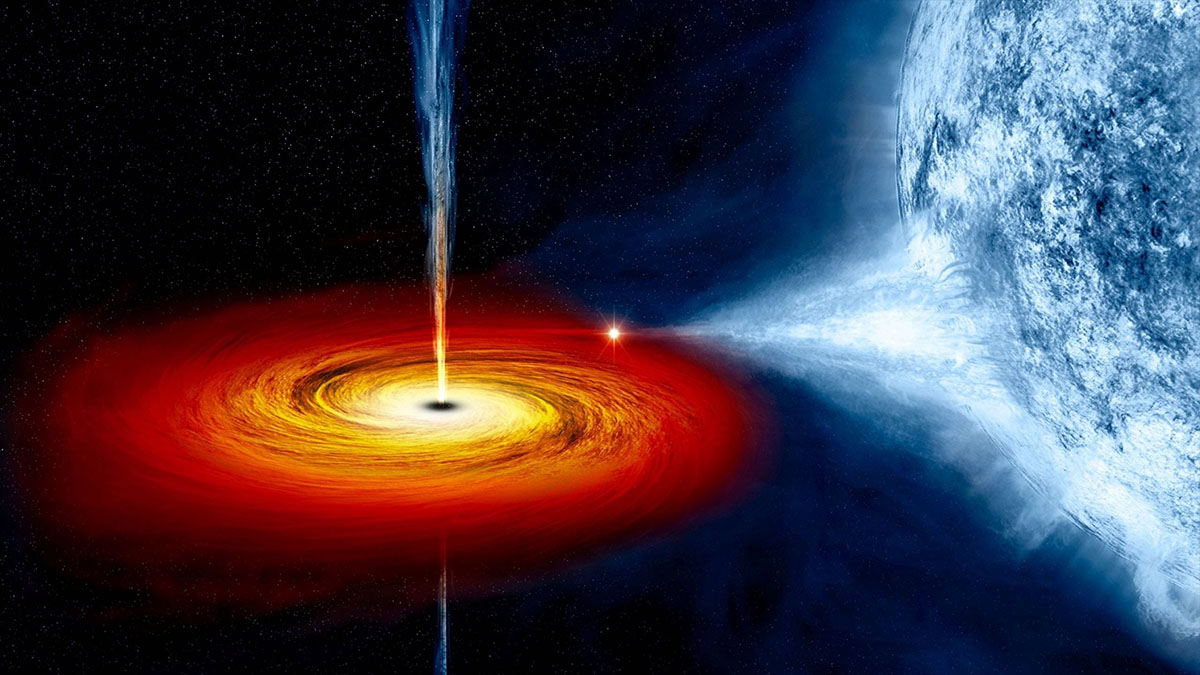say, how far away is that black hole?

Trying to pin down the distance between our planet and a nearby black hole is a very tricky business. By virtue of being pinpoints of self-gravitating energy, black holes are usually about the size of a big city and very hard to observe directly. Their small size is also what makes it so difficult to capture a snapshot of them outside the core of an active galaxy. To catch one transiting the disk of an alien sun would be a once in a century shot that would require equipment at least several generations ahead of what we have now, and it’s more than likely it would be surrounded by a bright accretion disk we couldn’t filter out for a better view. However, there is a way to get a good idea of whether there’s a black hole in our stellar neighborhood and how far away it may be.
Unless you’re an astronomer, you might not know about the star V404 Cygni which is actually one of the best candidates for the observational evidence of a black hole since it’s being eaten alive by something very small, very dense and pretty much invisible to our telescopes. As its outer layers are being stripped off, the plasma is funneled into an accretion disk around the event horizon of the black hole feeding on it, and because there’s a limit to how much of it can be ingested at any give time, the process is very messy and energetic, generating a storm of radio waves and X-rays which we can detect and pin down to a specific location. Meanwhile, matter that fell into the black hole itself is for all intents and purposes locked away from the rest of the universe since the gravitational monsters in question are blackbodies, i.e. objects that absorb radiation without emitting any of their own. In reality, black holes do emit some energy via Hawking radiation, but it’s an infinitesimal fraction of a single watt, something we would have trouble detecting even right in front of our noses.
This is why astronomers prefer to focus on the outbursts of X-rays and radio waves in the accretion disk of the black hole they’re trying to detect. However, these cosmic belches are irregular and short lived according to a paper by U.S. and Dutch scientists. To get a better grip on what was going on around V404 Cygni, they turned to very long baseline interferometry, a technique that combines data collected by several radio telescopes at the same time and looks for the interference patterns made by radio waves emitted from distant sources. The jets spewed from the black hole as it fed created a relatively steady beacon for the team and when the results of their observations were combined with previous measurements of the system, they could find the distance from the Earth to the gravitational ghost the same way we calculate distances between us and other stars. So what separates us from the monster in question? Some 7,800 light years, up to half the distance estimated by older methods which didn’t account for the effects of interstellar dust on the signals emanating from a feeding black hole. And in a galaxy about 100,000 light years across, that’s not very far at all…
See: J. C. A. Miller-Jones, P. G. Jonker, V. Dhawan, W. Brisken, M. P. Rupen, G. Nelemans, & E. Gallo (2009). The first accurate parallax distance to a black hole ApJ Letters arXiv: 0910.5253v1





